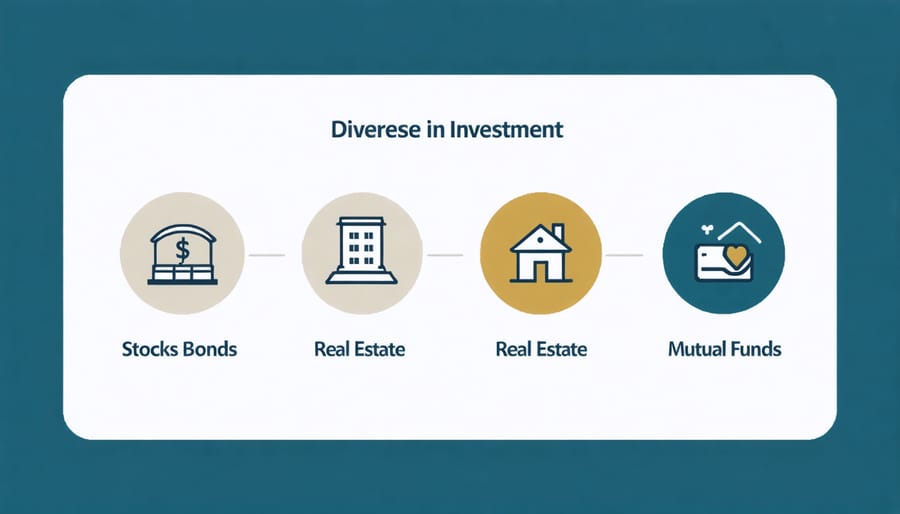
Transform your financial future today with a comprehensive PDF guide designed specifically for young adults ready to master their finances. This essential resource bridges the gap between basic money management and real-world financial success, offering clear, actionable steps that resonate with today’s economic challenges.
Unlike traditional financial advice that often feels disconnected from young adults’ reality, this guide tackles modern money concerns head-on – from managing student loan debt to building emergency savings while juggling the gig economy. Whether you’re starting your first job, launching a side hustle, or planning for long-term wealth creation, you’ll find practical strategies tailored to your unique financial journey.
Think of this PDF as your personal financial mentor, breaking down complex money concepts into bite-sized, implementable actions. It’s not just about learning to budget; it’s about creating a sustainable financial foundation that grows with you through every life stage. Our guide combines time-tested financial principles with contemporary money management tools, ensuring you’re equipped to make informed decisions in today’s dynamic economic landscape.
Building Your Financial Foundation

Budgeting Basics That Actually Work
Let me share a little secret: budgeting doesn’t have to be complicated or restrictive. I remember when I first started managing my finances, I tried every complex spreadsheet system out there until I discovered the simple techniques that actually stuck.
Start with the 50/30/20 rule – it’s a game-changer. Allocate 50% of your income to necessities (housing, food, utilities), 30% to wants (entertainment, shopping, dining out), and 20% to savings and debt repayment. What I love about this method is its flexibility; you can adjust these percentages to match your lifestyle and goals.
Here’s a practical tip that transformed my spending habits: use the 24-hour rule for non-essential purchases. When you’re tempted to buy something, wait 24 hours before making the decision. I’ve saved countless dollars by implementing this simple pause.
Digital tools can be your best friends. Try tracking apps that automatically categorize your spending – they’re like having a personal financial assistant in your pocket. I particularly recommend setting up automatic transfers on payday; when the money moves to your savings before you can spend it, you’re less likely to miss it.
Remember, the best budget is one you’ll actually follow. Start small, be consistent, and celebrate your progress along the way.
Emergency Funds: Your Financial Safety Net
Life has a way of throwing unexpected curveballs – from sudden car repairs to medical emergencies. That’s why having an emergency fund isn’t just smart; it’s essential for your peace of mind. I learned this lesson the hard way when my laptop died right before a major project deadline, and my emergency savings saved me from a potentially career-damaging situation.
Financial experts typically recommend saving 3-6 months of living expenses in an easily accessible account. Start small by setting aside just $25-50 from each paycheck. Within a year, you’ll be amazed at how your safety net grows! The key is to keep this money separate from your regular checking account – out of sight, out of mind, but there when you truly need it.
Consider opening a high-yield savings account specifically for your emergency fund. While the interest rates won’t make you rich, every little bit helps, and more importantly, it keeps your money liquid and readily available.
Remember: an emergency fund isn’t just about preparing for disasters – it’s about empowering yourself to handle life’s challenges with confidence. When building your fund, be realistic about your monthly expenses and include everything from rent and utilities to groceries and insurance. Take it from someone who’s been there – having this financial cushion helps you sleep better at night!
Smart Investment Strategies for Beginners
Starting Your Investment Journey
Starting your investment journey doesn’t have to feel overwhelming – I remember how nervous I was when I made my first investment! Let’s break it down into manageable steps that can help you build confidence and wealth simultaneously.
Begin with a high-yield savings account – it’s like dipping your toes in the investment pool before diving in. While I was building my emergency fund, I earned a modest return while keeping my money accessible. From there, consider exploring employer-sponsored retirement accounts, particularly if your company offers matching contributions – it’s essentially free money!
Index funds are another fantastic starting point for new investors. Think of them as buying a slice of the entire market rather than betting on individual companies. They typically offer lower fees and built-in diversification, which helps manage risk while you’re learning the ropes.
For those ready to take the next step, consider opening a brokerage account to invest in individual stocks or ETFs (Exchange-Traded Funds). Start small and gradually increase your investments as you become more comfortable with market movements. I started with just $50 a month, and it’s amazing how those small contributions can grow over time.
Remember, successful investing isn’t about getting rich quickly – it’s about making consistent, informed decisions aligned with your long-term goals. The key is to start early and stay committed to your investment strategy, even when markets get choppy.

Common Investment Mistakes to Avoid
Let’s talk about something I wish someone had told me when I first started investing – the common pitfalls that can trip up even the savviest young investors. I’ve been there, and I know how overwhelming it can feel when you’re just starting out!
One of the biggest mistakes I see is putting all your eggs in one basket. While that hot new tech stock might seem irresistible, diversification is your best friend. Think of it like planning a well-balanced meal – you wouldn’t eat just one food group, right?
Another common misstep is letting emotions drive your investment decisions. Trust me, I understand the urge to panic-sell when markets dip or jump on the latest investment trend because of FOMO. Instead, stick to your investment strategy and remember that investing is a marathon, not a sprint.
Many young adults also fall into the trap of waiting too long to start investing, thinking they need a large sum to begin. Even small, regular contributions can grow significantly over time, thanks to compound interest. It’s like planting a garden – the earlier you start, the more time your investments have to bloom.
Lastly, don’t forget to read the fine print! Understanding fees, terms, and conditions might not be exciting, but it’s crucial for your financial health. Think of it as reading the ingredient list on your favorite products – you want to know exactly what you’re getting into.
Credit Management and Debt Strategy

Building a Healthy Credit Score
I remember when I first started building my credit score – it felt like trying to solve a puzzle without having all the pieces! But trust me, it’s not as complicated as it seems. Think of your credit score as your financial report card, showing lenders how responsible you are with money.
Start by opening a basic credit card with a low limit. I suggest looking for student cards or secured credit cards if you’re just beginning. The key is to use it wisely – make small purchases you can easily pay off, like your monthly Netflix subscription or grocery runs.
Here’s my golden rule: never charge more than 30% of your credit limit, and always, always pay your full balance on time. Set up automatic payments if you tend to forget due dates (been there!). This simple habit alone can significantly boost your score over time.
Another tip that worked wonders for me was becoming an authorized user on a parent’s or trusted friend’s credit card with a solid payment history. This can give your credit score a nice jumpstart.
Remember to regularly check your credit report – you’re entitled to one free report annually from each major bureau. I make it a fun routine by checking mine every four months, marking it in my calendar like a self-care appointment. Watch out for any errors and dispute them promptly to keep your score healthy and growing.
Smart Debt Management
Let’s talk about something that might feel a bit overwhelming – debt management. Trust me, I’ve been there, and so have many of my readers! The key is to approach it strategically, especially when dealing with those pesky student loans that many of us are familiar with.
First, prioritize your debts based on interest rates. Those high-interest credit cards? They should be at the top of your payoff list. Create a debt repayment calendar that aligns with your paycheck schedule, making it easier to stay on track. Remember, consistency is your best friend here!
For student loans, explore income-driven repayment plans if you’re struggling with monthly payments. Many young professionals find relief through these programs while starting your business venture or establishing their careers. Don’t forget to check if you qualify for loan forgiveness programs – it’s worth investigating!
Consider the debt avalanche method (focusing on highest interest rates first) or the debt snowball method (paying off smallest debts first) based on what motivates you better. I personally found the snowball method incredibly encouraging – those small wins really keep you going!
Set up automatic payments to avoid late fees and potentially qualify for interest rate reductions. Also, build an emergency fund alongside your debt repayment plan to prevent taking on additional debt when unexpected expenses arise.
Entrepreneurial Finance Essentials
Business Budgeting and Cash Flow
Managing your business finances doesn’t have to feel overwhelming! As someone who started my own small business, I’ve learned that maintaining a healthy cash flow is one of the most essential business skills you’ll need to master.
Start by creating a detailed monthly budget that tracks all your income sources and expenses. Include fixed costs like rent and utilities, variable expenses such as inventory and marketing, and don’t forget to factor in seasonal fluctuations. I recommend using the 50-30-20 rule: allocate 50% for essential operations, 30% for growth opportunities, and 20% for savings and emergency funds.
Keep a close eye on your cash flow by maintaining separate business and personal accounts, tracking receivables diligently, and establishing clear payment terms with clients. Consider using accounting software to automate these processes – it’s been a game-changer for my business!
Remember to build an emergency fund covering at least three to six months of operating expenses. This buffer will help you navigate unexpected challenges without derailing your business growth. Also, consider creating multiple revenue streams to ensure steady cash flow throughout the year.
Pro tip: Review your budget monthly and adjust as needed. Business finances are dynamic, and your budget should evolve with your growing enterprise. Stay proactive about collecting payments and don’t hesitate to negotiate better terms with suppliers when possible.
Securing Business Funding
When I started my first business, I wish I’d known about all the funding options available to young entrepreneurs. Today, I’m excited to share these possibilities with you! Traditional bank loans are just the beginning – there’s a whole world of financing opportunities waiting to be explored.
Crowdfunding platforms like Kickstarter and Indiegogo have revolutionized business funding, allowing you to showcase your idea while building a community of supporters. I’ve seen incredible success stories of women entrepreneurs who raised substantial capital through these platforms, often exceeding their initial goals.
Angel investors and venture capitalists are another avenue, particularly if your business has high growth potential. These investors often bring valuable expertise and networking opportunities along with their financial support. Don’t overlook small business grants, especially those specifically designed for women and young entrepreneurs – many go unclaimed simply because people don’t know about them!
Business incubators and accelerators offer not just funding but also mentorship and resources. They’re particularly valuable for tech startups and innovative business models. Consider also microloans and peer-to-peer lending platforms, which can be less intimidating than traditional bank loans for first-time entrepreneurs.
Remember, you can combine multiple funding sources. Many successful businesses start with personal savings or family support, then gradually attract larger investors as they grow. The key is matching the funding source to your business’s unique needs and growth stage.
As we wrap up our journey through financial literacy, remember that building a strong financial foundation is one of the most empowering steps you can take for your future. I’ve been exactly where you are, feeling overwhelmed by financial terms and concepts, but I can tell you firsthand that knowledge truly is power when it comes to money management.
The comprehensive PDF guide we’ve created brings together all the essential elements we’ve discussed – from budgeting basics and emergency funds to investment strategies and debt management. It’s designed to be your go-to resource, something you can reference whenever you need guidance or reassurance on your financial journey.
What I love most about this guide is that it grows with you. Whether you’re just starting your first job or planning for major life milestones, you’ll find relevant, actionable advice that adapts to your changing needs. Plus, it includes worksheets and calculators that make it easy to put what you’ve learned into practice.
Ready to take control of your financial future? Download our complete Financial Literacy Guide for Young Adults now. It’s more than just a PDF – it’s your personal roadmap to financial confidence and independence. Remember, every financial expert started as a beginner, and with the right tools and guidance, you’re capable of achieving remarkable financial success.
Join thousands of other young adults who’ve already transformed their financial lives with this guide. Your future self will thank you!



